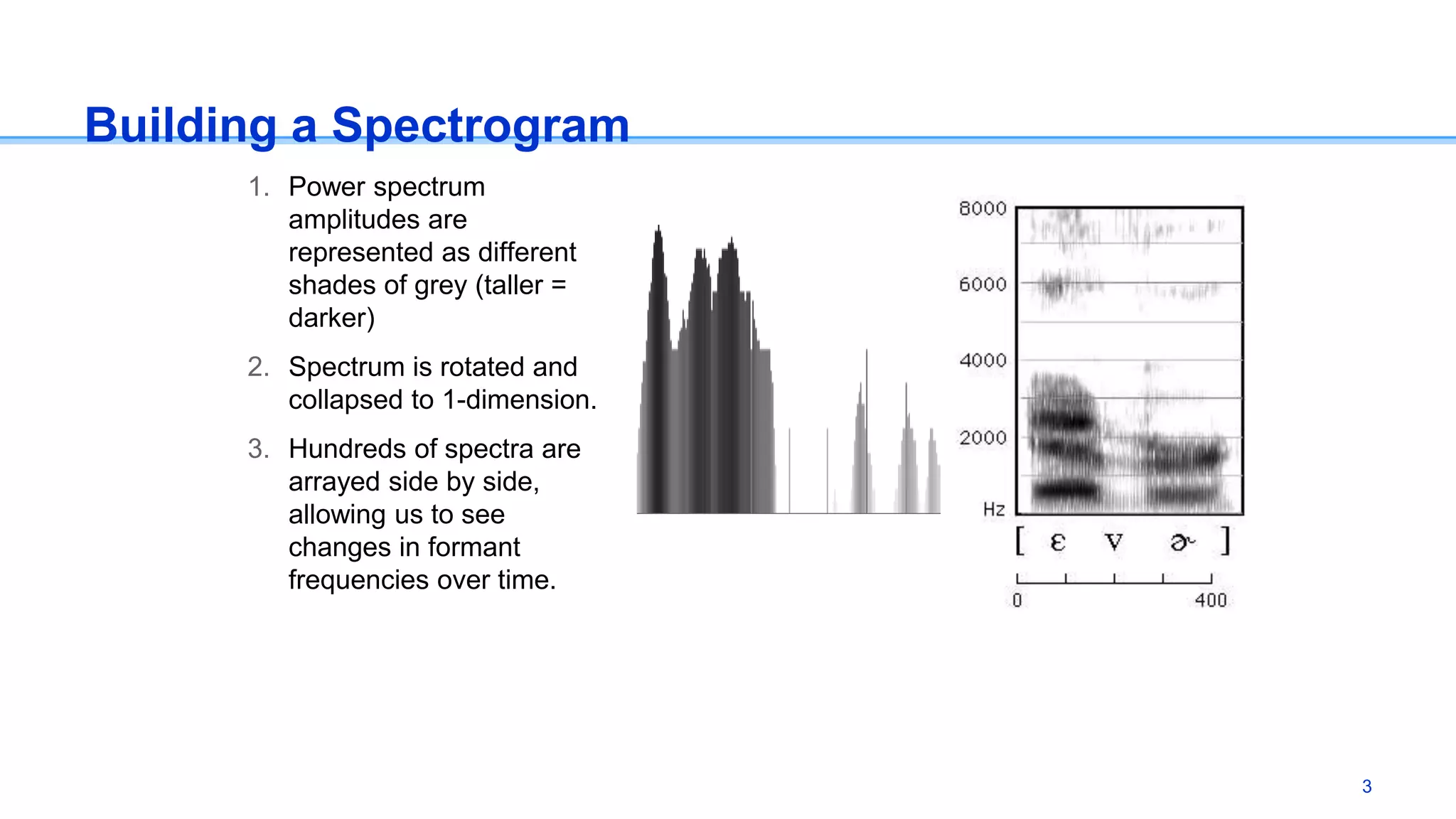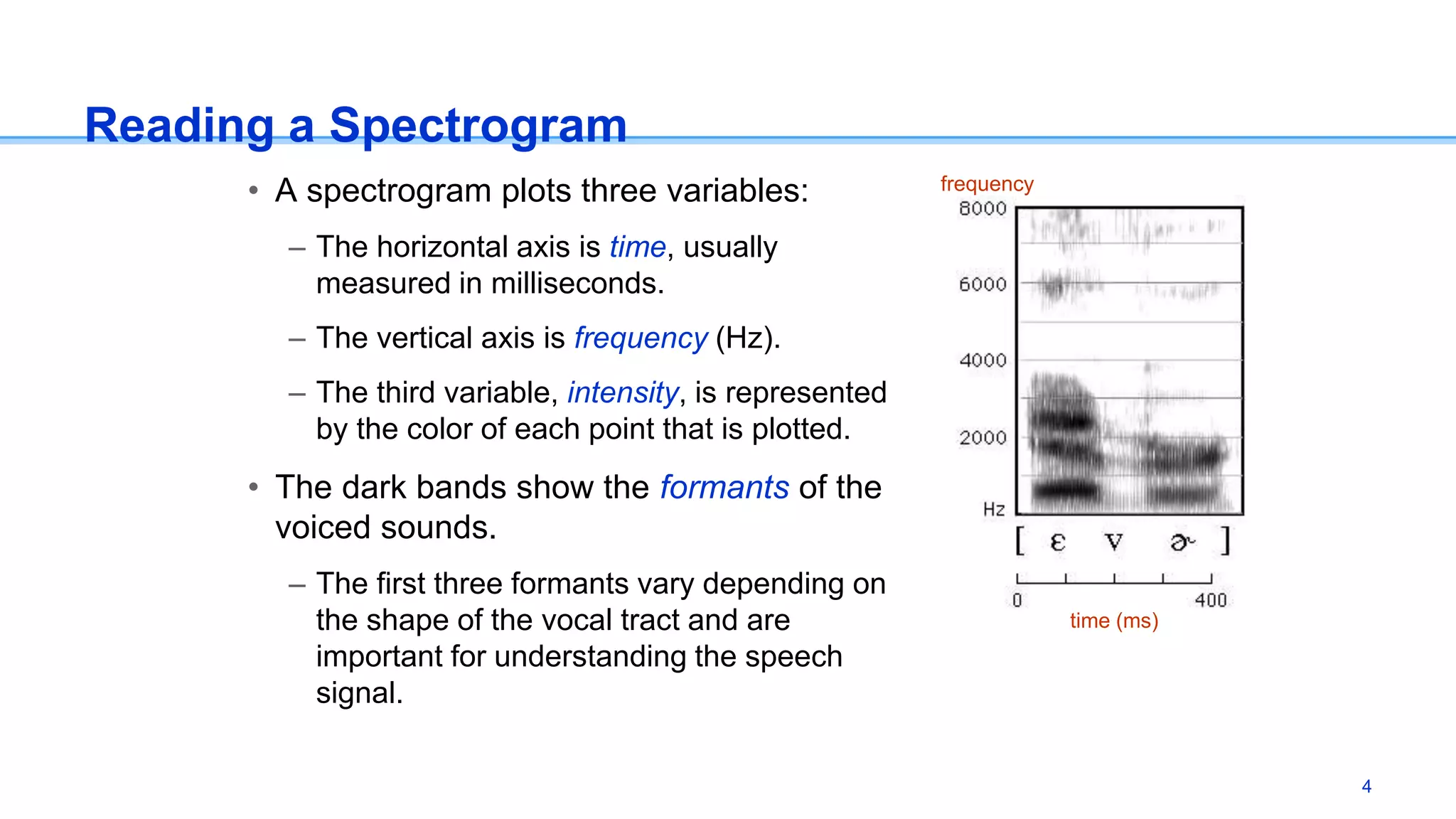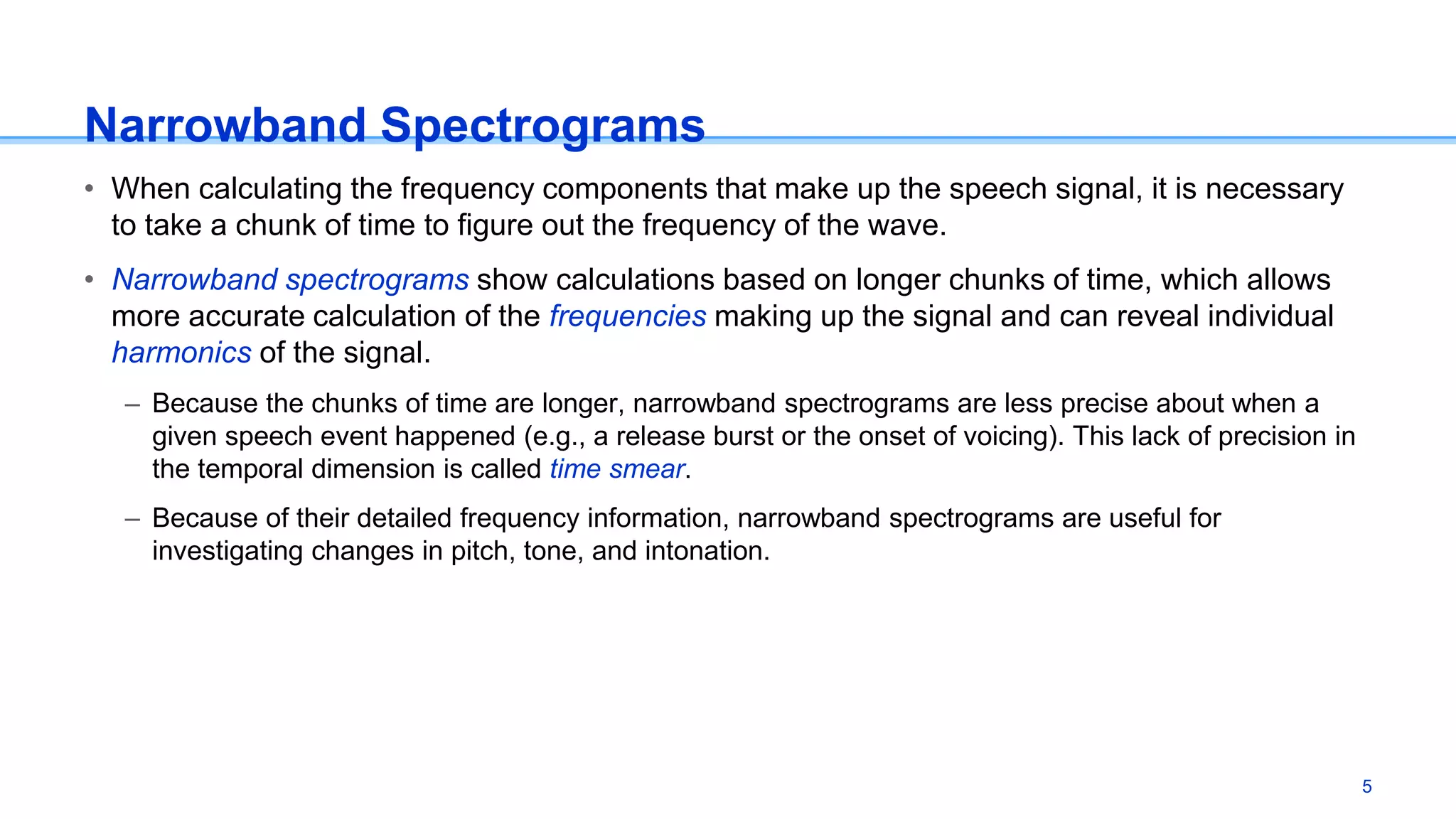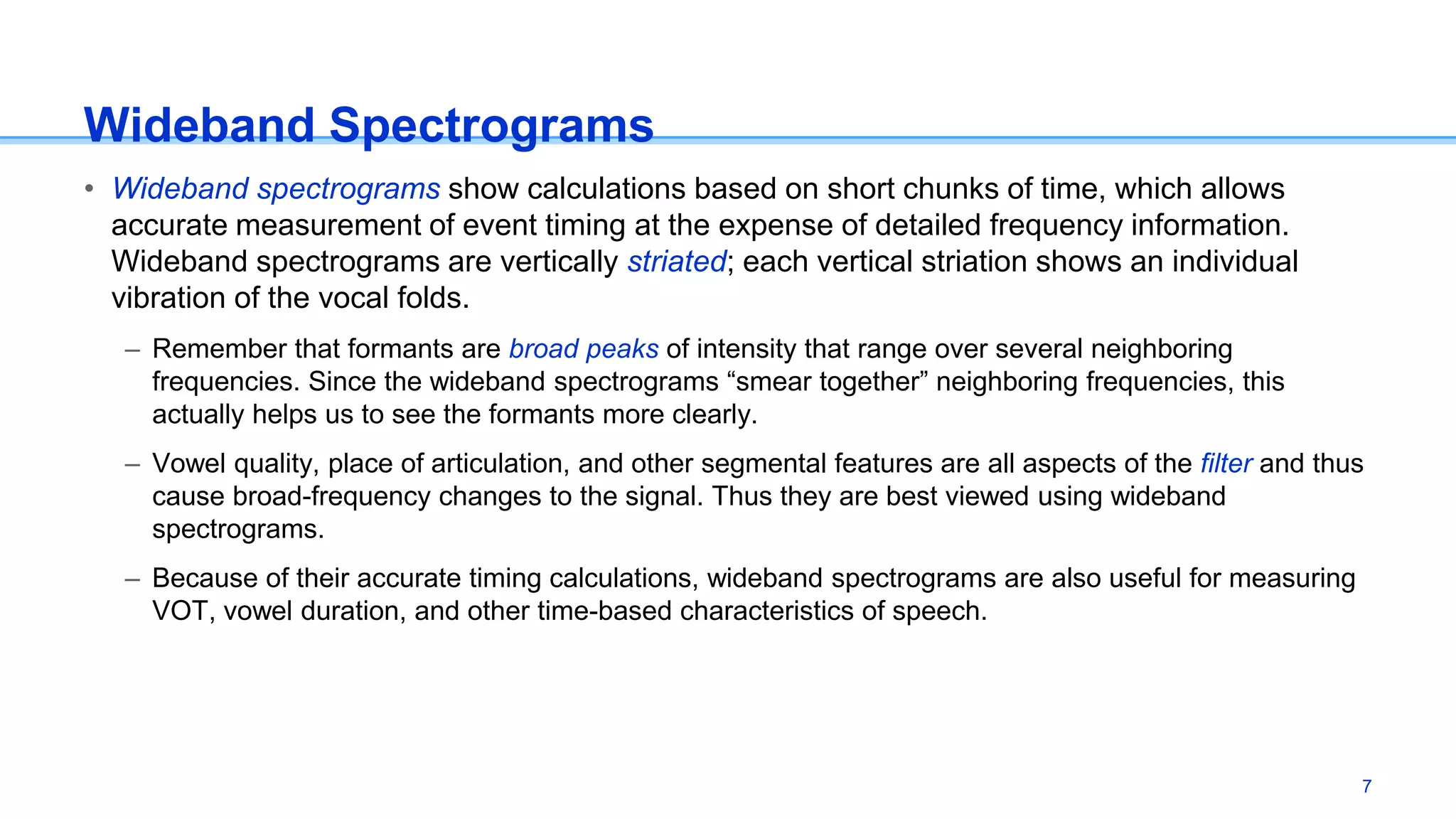Spectrograms allow phoneticians to visualize how the frequency spectrum of speech sounds changes over time. They plot frequency on the vertical axis, time on the horizontal axis, and intensity as color. Narrowband spectrograms provide detailed frequency information while wideband spectrograms precisely show timing. Common speech sounds like vowels, consonants, and transitions between them exhibit characteristic patterns. Reading spectrograms is essential for instrumental phonetics research.





![Narrowband Spectrograms
• [ɑbɑ]
– Frequency range: 0 – 5000 Hz; duration: ≈0.75 s
– Window size: 0.05 s
Individual
harmonics
6](https://image.slidesharecdn.com/spectrograms-161222181059/75/Spectrograms-6-2048.jpg)

![Wideband Spectrograms
• [ɑbɑ]
– Frequency range: 0 – 5000 Hz; duration: ≈0.75 s
– Window size: 0.01 s
Formants
vertical striations
8](https://image.slidesharecdn.com/spectrograms-161222181059/75/Spectrograms-8-2048.jpg)

![Reading a Spectrogram: Voicing
• [ɑzɑ]
– Frequency range: 0 – 5000 Hz; duration: ≈0.75 s
Voicing band
10](https://image.slidesharecdn.com/spectrograms-161222181059/75/Spectrograms-10-2048.jpg)
![Reading a Spectrogram: Voicing
• [ɑsɑ]
– Frequency range: 0 – 5000 Hz; duration: ≈0.75 s
No voicing band
11](https://image.slidesharecdn.com/spectrograms-161222181059/75/Spectrograms-11-2048.jpg)

![Reading a Spectrogram: Approximants
• [ɑlɑ]
– Frequency range: 0 – 5000 Hz; duration: ≈0.75 s
Formants
low F1 value for the approximant [ l]
13](https://image.slidesharecdn.com/spectrograms-161222181059/75/Spectrograms-13-2048.jpg)

![Reading a Spectrogram: Oral Stops
• [ɑpɑ]
– Frequency range: 0 – 5000 Hz; duration: ≈0.75 s
period of closure aspiration noise
release burst
15](https://image.slidesharecdn.com/spectrograms-161222181059/75/Spectrograms-15-2048.jpg)

![Reading a Spectrogram: Nasal Stops
• [ɑnɑ]
– Frequency range: 0 – 5000 Hz; duration: ≈0.75 s
“zeroes”
17](https://image.slidesharecdn.com/spectrograms-161222181059/75/Spectrograms-17-2048.jpg)
![Reading a Spectrogram: Nasal Stops
• [ɑnɑ]
lower amplitude
18](https://image.slidesharecdn.com/spectrograms-161222181059/75/Spectrograms-18-2048.jpg)
![Reading a Spectrogram: Fricatives
• Fricatives are characterized by fairly high energy (darker color) especially in the
higher frequencies, and (usually) a lack of formant bands.
– [h] often does show formant bands. This is because [h] generates turbulence in the same
place that voicing originates (the glottis), so the turbulence of [h] is subject to the same
filter that vowels are (namely, the entire vocal tract). The spectrum of [h] can vary widely
depending on the following vowel.
19](https://image.slidesharecdn.com/spectrograms-161222181059/75/Spectrograms-19-2048.jpg)
![Reading a Spectrogram: Fricatives
• [ɑʃɑ]
– Frequency range: 0 – 10,000 Hz; duration: ≈0.75 s
high energy in the higher frequencies
20](https://image.slidesharecdn.com/spectrograms-161222181059/75/Spectrograms-20-2048.jpg)
![Reading a Spectrogram: Fricatives
• [ɑhɑ]
– Frequency range: 0 – 10,000 Hz; duration: ≈0.75 s
formant bands visible through the [h]
21](https://image.slidesharecdn.com/spectrograms-161222181059/75/Spectrograms-21-2048.jpg)





![Reading a Spectrogram:
Distinguishing Approximants
• Approximants flow smoothly into vowels
27
from Ladefoged, P. & Johnson, K. (2011). A Course in Phonetics (6th ed.), p. 202.
• [l] – dip in F2, slight rise in F3
• [ɹ] – central F2, scoop in F3
• [w] – like high back vowel [u/ʊ]
• [j] – like high front vowel [i/ɪ]](https://image.slidesharecdn.com/spectrograms-161222181059/75/Spectrograms-27-2048.jpg)
![Spectrogram Examples: [ɹ]
• Scoop shape to F3 • F2 central (between front & back vowels)
28
1800 Hz
1500 Hz
500 Hz
[ m ɛ ɹ i ] [ k ɑ ɹ ]](https://image.slidesharecdn.com/spectrograms-161222181059/75/Spectrograms-28-2048.jpg)